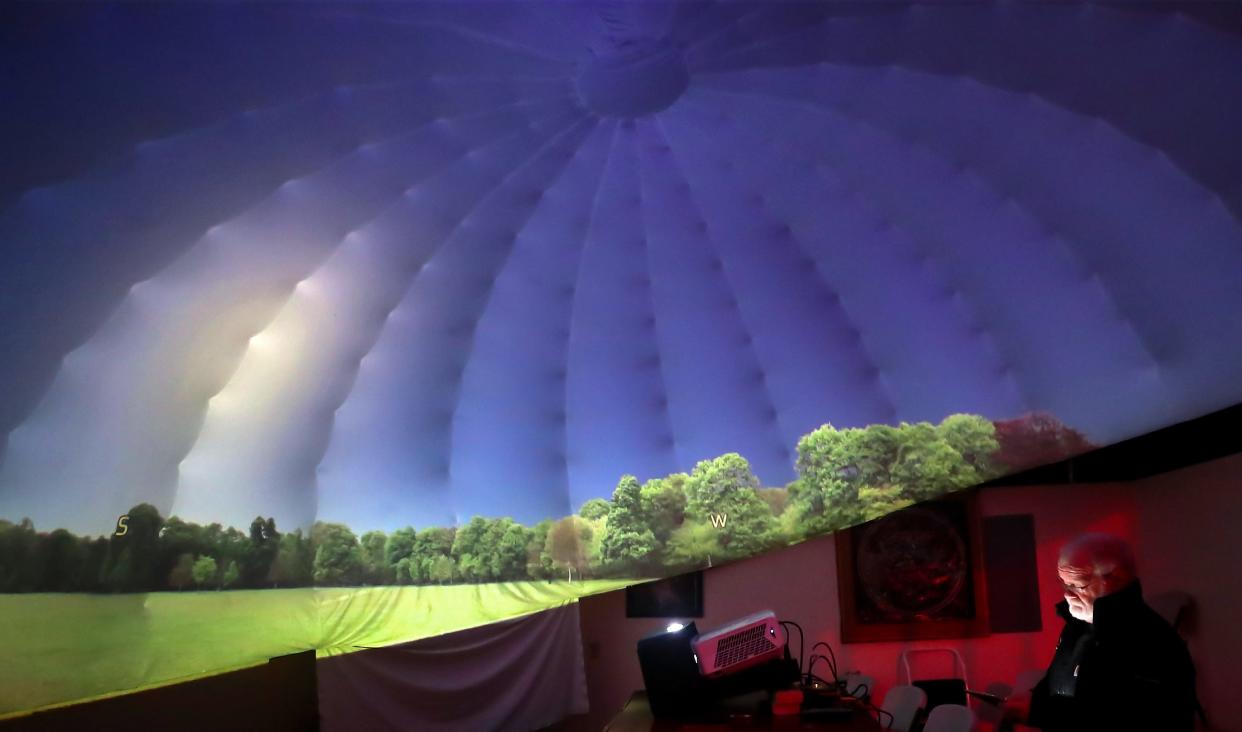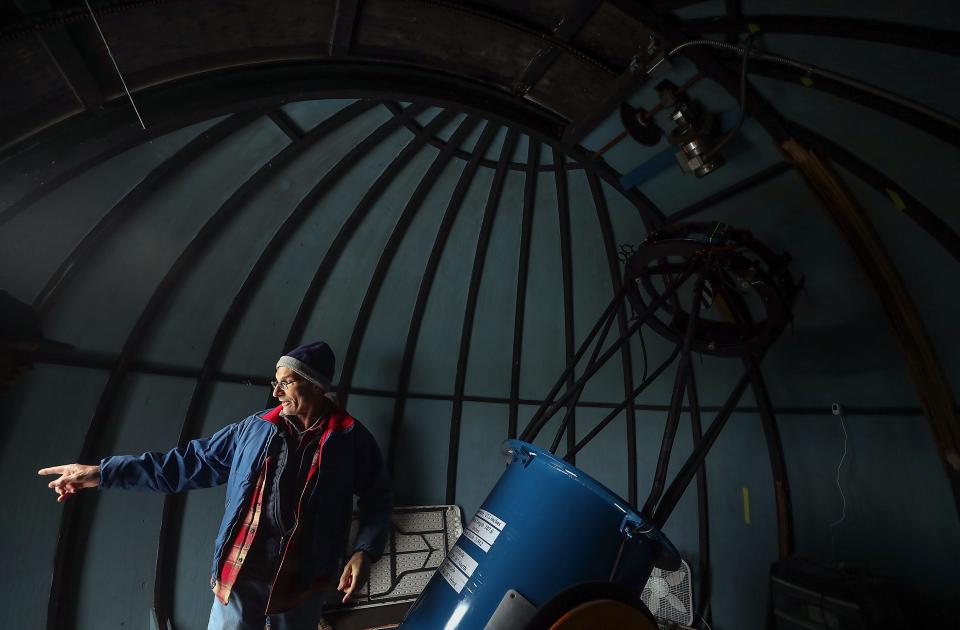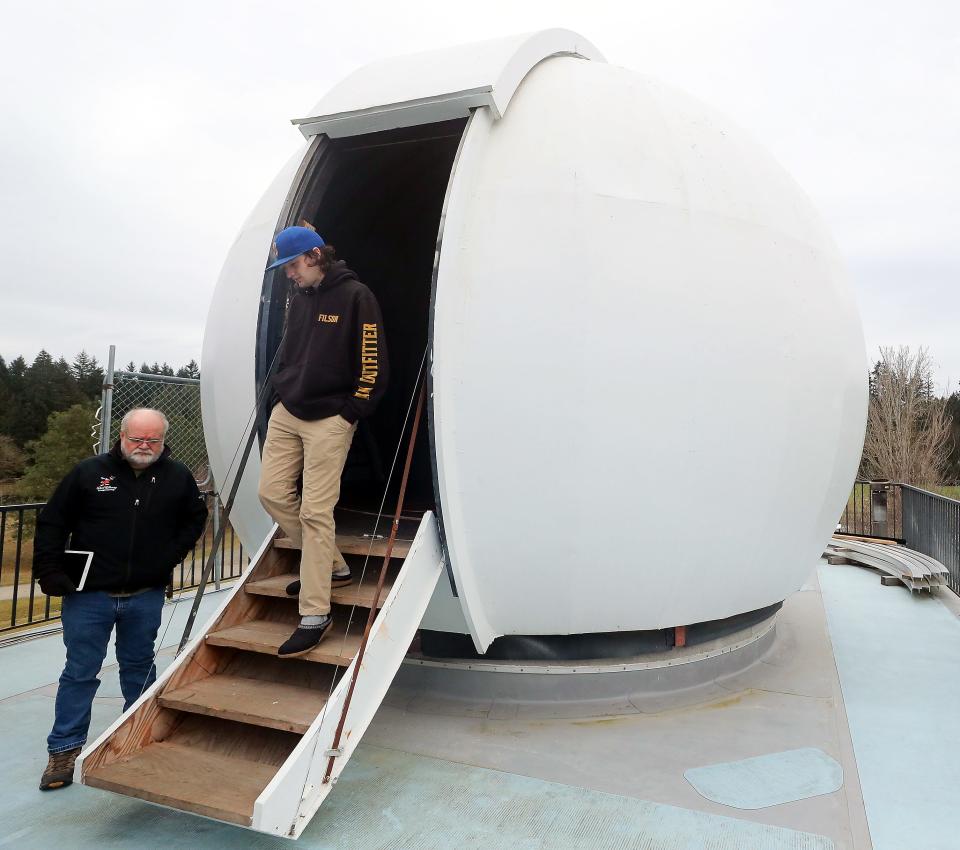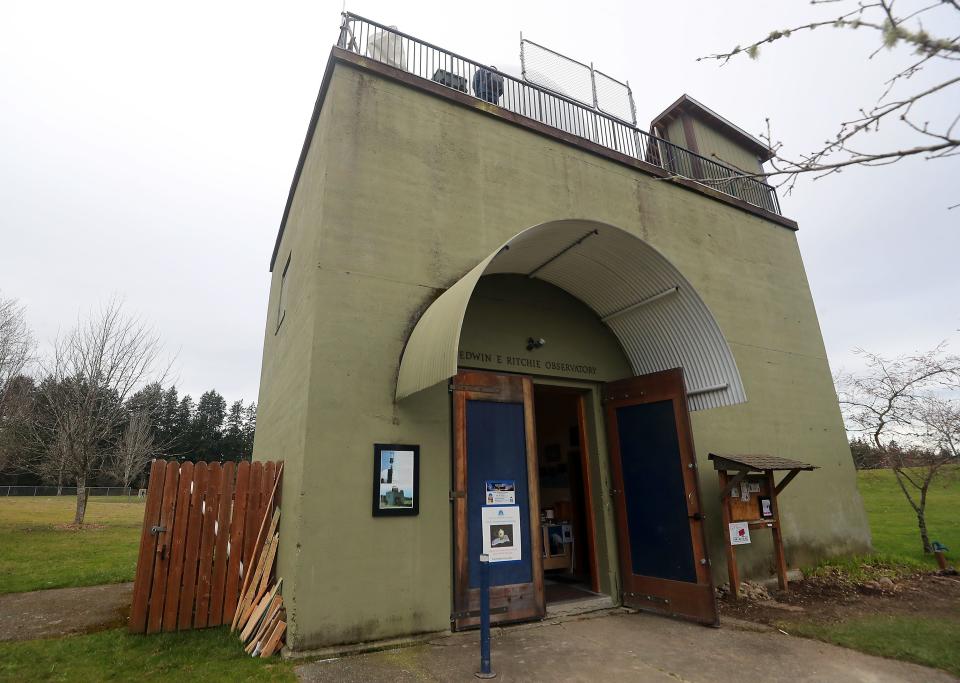Battle Point Astronomical Association hopes to inspire with new views of the heavens

BAINBRIDGE ISLAND – Steve Ruhl makes some motions on a tablet, and a gray sphere sporting a gigantic crater zooms into view out of a field of stars.
“This is Mimas, which is a moon of Saturn,” he says. “It has the distinction of having the largest impact crater, relative to size, of any object in the solar system. It also does a really good double of the Death Star.”
A few more pokes at the tablet, and Jupiter’s moon Io appears on the planetarium dome above him. Then a trip to the ends of the solar system: Pluto.
“Always popular with the kids,” says Frank Petrie, gazing up at image.
And then Ruhl, the Battle Point Astronomical Association’s chief scientist, guides the flight across the lightyears back to Earth, to the association's home in Bainbridge Island's Battle Point Park.

The images come courtesy of a roughly $40,000 planetarium projector the association recently acquired with the hopes of using it to ramp up educational programs both at its John H. Rudolph Planetarium and in local schools. The association launched a campaign to raise the funds needed to buy a new projector after the system’s predecessor reached the end of its life about five years ago. Now, the group has another tool to introduce young and old to astronomy, to maybe make science a bit more accessible.
“We’re a bunch of nerdy geeks,” said Petrie, the association's president. “We enjoy it, and we want to share that joy with as many people as we can.”
Perhaps the new system might help to inspire the next generation of youth interest in the stars as the organization did for Cole Rees when he was in 2nd grade at Ordway Elementary School. A BPAA presentation helped to kick off his interest in astronomy, and today he serves as the group’s chief astronomer.
“We want people to understand science, we want people to become comfortable with science in general and a good place to start is astronomy, because everybody loves astronomy,” Petrie said. “It’s a science that everybody can kind of understand.”

The nonprofit was formed in 1992 by founders Ed Ritchie, Mac Gardner and John Rudolph, and the group’s crown jewel, a large telescope named after Ritchie, is stationed atop a World War II-era building at Battle Point Park. Today the building is crammed with equipment and projects aimed at studying the stars.
The association’s goal now is to shift its main telescope so it can be automated to function remotely, to open it up for scientific research and taking high quality photos. At the same time, the association is giving the telescope and the dome that protects it some special care.
Where the big telescope really shines is in astrophotography, Petrie said, noting that Rees is leading the charge in converting the telescope for purely photographic use.

“The big, famous telescopes are in such high demand that any one astronomer can’t spend enough time on it to get the data that they need to really develop their results,” Petrie said. “They’ll make some discoveries with those telescopes, but then they’ll kick it out to the amateur community and say, ‘Hey, can you guys gather some long, trending data that we can then use to back up our research?’ That’s what we’re hoping to be able to contribute to. It won’t just be a few of us doing it, we want to open it up to the community to be able to participate in that sort of thing.”
The association touts the Ritchie Telescope as the largest publicly accessible telescope in the Pacific Northwest. “It’s extremely capable, and once we get it going,” Petrie said, “it’s going to be very accessible."
For more information about BPAA, visit bpastro.org.

This article originally appeared on Kitsap Sun: Bainbridge astronomy group offers new views of the heavens

